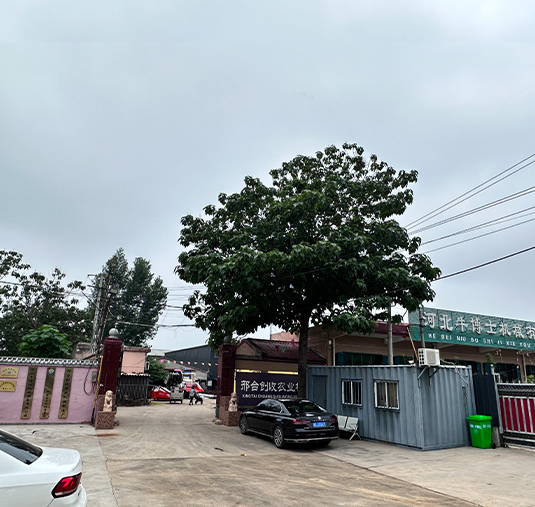Rice Harvesting Equipment for Efficient Cutting and Binding Solutions
The Rice Reaper and Binder Revolutionizing Agriculture
In the heart of agricultural innovation, the rice reaper and binder stand as pivotal advancements that have transformed the way rice is harvested. Rice, a staple food for more than half of the world’s population, requires meticulous care throughout its growth cycle. However, traditional methods of harvesting were labor-intensive and time-consuming, often making it difficult for farmers to keep up with the ever-increasing demand for this essential crop. The introduction of the rice reaper and binder has not only improved efficiency but also ensured a sustainable approach to rice production.
The Traditional Harvesting Challenge
Harvesting rice traditionally involved hundreds of laborers wielding sickles, cutting each stalk by hand. This process was not only slow but also physically demanding, leading to concerns about labor shortages, especially during peak seasons when the demand for agricultural workers surged. Moreover, weather uncertainties could lead to losses if the rice was not harvested on time, threatening the livelihoods of countless farmers. To address these challenges, agricultural engineers and researchers began to explore mechanization as a solution for rice harvesting.
The Advent of the Rice Reaper
The rice reaper revolutionized the harvesting process by significantly reducing labor input and time. Essentially, a rice reaper is a machine designed to cut rice plants at the base, gathering them into manageable bundles. Early models of rice reapers were simple, often pulled by tractors, with rotating blades that efficiently harvested the crop in a fraction of the time it took human laborers. These machines not only increased productivity but also minimized the physical strain on farmers, allowing them to focus on other critical aspects of rice production.
Modern rice reapers have evolved to incorporate advanced technologies, including GPS and automated systems that increase their Efficiency. With real-time monitoring capabilities, farmers can track the performance of their machinery, ensuring optimal operation and timely maintenance. Furthermore, the integration of artificial intelligence and sensor technologies has paved the way for predictive analytics, allowing farmers to make data-driven decisions regarding harvest timing and resource allocation.
The Role of the Rice Binder
rice reaper and binder

While the rice reaper excels at cutting and gathering rice stalks, the rice binder complements its function by bundling the harvested rice into neat sheaves. This step is crucial for further processing and transportation. The rice binder collects the cut rice, neatly ties them into bundles, and prepares them for drying and storage. This two-pronged approach—cutting with the reaper and binding—streamlines the entire harvesting process.
In many regions, the rice binder is attached directly to the reaper, creating a combined machine that enhances efficiency even further. By minimizing the need for multiple pieces of equipment, farmers can maximize their operational capacity while reducing costs associated with labor, fuel, and maintenance.
Environmental Considerations
The mechanization of rice harvesting, while beneficial, also raises questions about environmental impact. Concerns include soil compaction, loss of biodiversity, and the potential strain on local ecosystems. However, modern reapers and binders are increasingly designed with sustainability in mind. Many machines are engineered to minimize soil disturbance and maintain effective crop rotation practices, thereby supporting the health of agricultural ecosystems.
Moreover, the adoption of precision agriculture techniques alongside these machines allows for a more sustainable approach to rice farming. By applying fertilizers and water more efficiently, farmers can reduce waste and environmental degradation, ensuring that rice production meets current needs without compromising future generations.
Conclusion
The rice reaper and binder epitomize the fusion of tradition and innovation in agriculture. By combining efficiency with sustainable practices, these machines are helping farmers meet the challenges of modern rice production. As we move toward an increasingly urbanized and technology-driven world, the importance of such advancements cannot be overstated. The ongoing evolution of agricultural machinery will continue to shape the future of food production, ensuring that the essential crop of rice remains accessible and plentiful for generations to come. In this era of precision agriculture, the rice reaper and binder symbolize hope for food security and agricultural sustainability.
Latest news
-
When to Upgrade Your Old Forage HarvesterNewsJun.05,2025
-
One Forage Harvester for All Your NeedsNewsJun.05,2025
-
Mastering the Grass Reaper MachineNewsJun.05,2025
-
How Small Farms Make Full Use of Wheat ReaperNewsJun.05,2025
-
Harvesting Wheat the Easy Way: Use a Mini Tractor ReaperNewsJun.05,2025
-
Growing Demand for the Mini Tractor Reaper in AsiaNewsJun.05,2025
